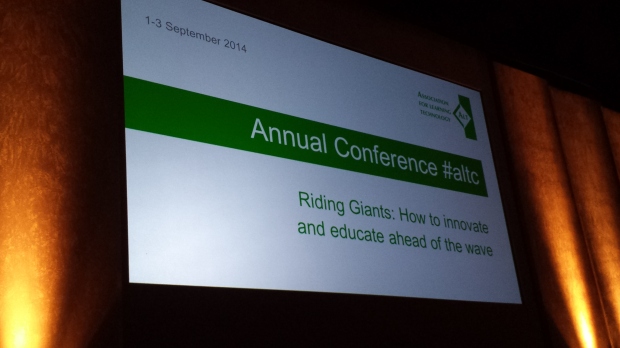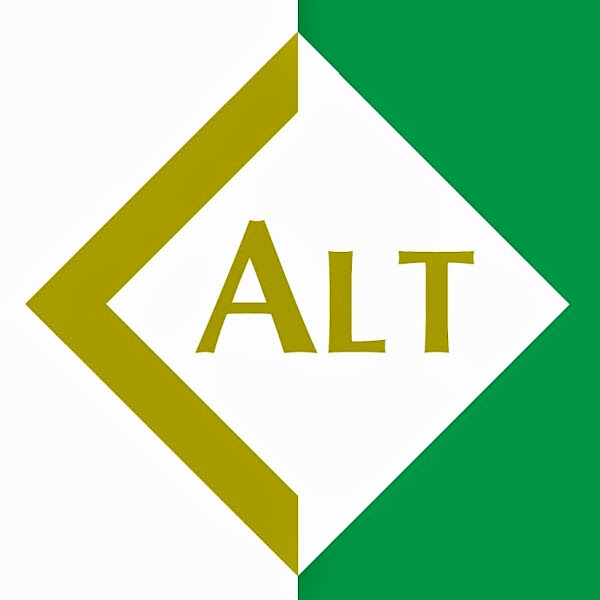
The “giants” in the title are waves. It’s an interesting choice, as is the emphasis on the need (or desire) to educate “ahead of the wave”. I mention this because, by the end, I thought it was a strange choice of title: the tone of the presentations and conversations during the breaks was one of learning from experience, not one of trying radically different approaches and technologies or defining innovating strategies.

The keynotes were different, though. The message was on the need to plan for the future, deal with change and anticipate challenges. Jeff Haywood’s keynote: Designing University Education for 2025: balancing competing priorities highlighted the need to look back to the past ten years and to define a strategy for the next ten years; it was interesting to see his strategy for embedding TEL in face to face, blended and open access learning (MOOCS) at Edinburgh University, at undergraduate and postgraduate levels. He seemed to know his stuff.
Catherine Cronin explored openness: collaborative development, collaborative learning, social media, digital presence and the changes these bring to HE. There are interesting challenges (social media and assessment, for example), but the overall tone was one of being open and flexible to collaboration and to people’s digital habits.
Ayrdey Watters’ keynote, Ed Tech’s Frankenstein’s Monster, and Teacher Machines, was inspiring and thought-provoking. Watters discussed Silicon Valley’s agenda for education: venture capital, open data, “fixing” education and how that really pushes an outdated, even destructive pedagogy, which she linked with Skinner’s theories.
I seriously recommend watching the video.
The sessions were different. Presenters shared the work they’ve been doing and the overall tone was one of stability: there are no giants, as the difficulties are the same (lack of time, etc.); change needs to be managed and is difficult in big organisations. TEL seems to be at a time of maturity: MOOCs (so many MOOCs) have ran and are being analysed and the key focus is on increasing student completion; lecture capture has been running for a while and mobile learning as well; there’s a transition from minimal standards in VLEs to one of focusing on learning design; Twitter, and social media in general, are now part of teaching practice. Student response systems work, but need careful planning and application
By the end, I had a few questions for the different ETT teams, which I hope you can help me with:
|
The three days I spent at Warwick University were intense, demanding, thought-provoking and rich with opportunities to think and talk to colleagues from the sector. And I’d never drunk so much coffee in my life.
The conference reinforced my belief that the focus should be on a learner-centred approach to TEL, and that our job requires us to be learners: we try things, implement then, take risks, make mistakes and handle change. And that’s the only way to ride the wave.

